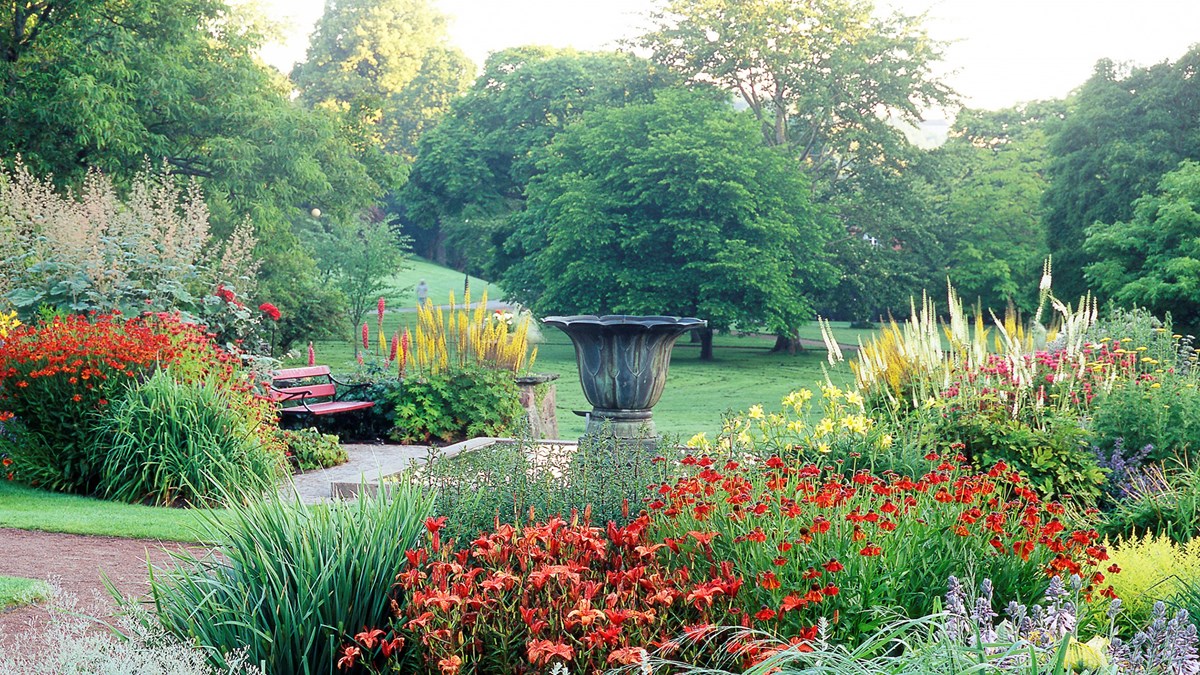Perennials

The extensive perennial beds were designed in 1989 by Rigmor Celander and Mona Holmberg, two former master gardeners at Botaniska. Mixed beds like these require a great deal of nourishment and nurture.
Colourful inspiration
In the centre you can see beds filled with larger perennials of various heights. The rockeries along the wall and on the slope up to the great lawn feature mainly low-growing plants, some shaped like cushions and others carpeting the ground. They all flower chiefly in spring and early summer. The best time for perennials is from midsummer to late autumn when the beds with tall perennials are in full bloom.
The plants in the perennial beds are ordered according to a colour scale from pale pastels around the edges to strong, warm colours in the middle. Colour composition with perennials is an English tradition mainly based on garden designer Gertrude Jekyll’s work at the beginning of the 1900s.
Attractions
Surrounded by plants with strong, warm colours at the centre of the perennial beds is an antique Japanese bronze fountain.
The bugbane (Actaea simplex ’Brunette’) with its purple leaves acquires sceptre-like white flowers in the late summer. They spread an exquisite scent around them.
Chinese plume poppies (Macleaya microcarpa) can reach the height of three metres under good conditions, and are suitable as single plants or as plant groups in the centre of the bed.






